Images of the Past Photographs as historical evidence by Myrtle Hill & Vivienne Pollock
Published in
Features,
Issue 1 (Spring 1994),
Volume 2
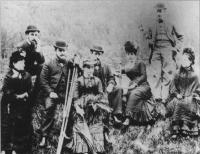
Plate 1. Dublin Photographic Society in Co. Wicklow, cl890. (RSAI COLLECTION)
Because they recorded exactly what was in front of the camera when the shutter was opened, old photographs are a particularly potent source of information about the historical past.
In recent years the local history market has been flooded with an array of books based on compilations of such material. These publications have proved extremely popular, offering an easily accessible window into events and scenes long vanished. On one level the reproduction of halfremembered buildings, faces and pastimes evokes a nostalgic response which in itself has helped to generate demand for these visual reminders. Such images have also, however, proved important instruments for historical investigators. Like oral history, they often succeed in capturing experiences which have been overlooked in more formal records. In longneglected areas of systematic research, such as local studies and women’s history, the careful use of photographic archives has served not only to illuminate aspects of our cultural heritage but also to stimulate interest in further study.
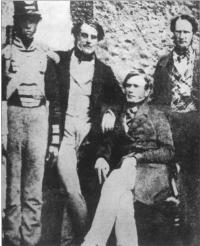
Plate 2. Thomas Francis Meagher and William Smith O’Brien and gaoler (on the right). At the time of this photograph they were under sentence of death.
Photomania
Although the earliest surviving Irish photographs date from the 1840s, the bulk of the most valuable and historically informative material in public collections dates from the 1860s onwards, a time when Ireland, in common with most western countries, was beginning to be gripped by photomania. By 1870 over seventy commercial studios had been established in Dublin and fifteen in Belfast. The widespread adoption of the dry-collodion glass plate negative in the 1880s considerably streamlined the still cumbersome photographic process, as well as making it more affordable, and helped usher in a new wave of popular enthusiasm for the medium. This decade saw the flowering of amateur clubs, under the umbrellas of the Photographic Society of Ireland, which reformed in Dublin in 1879, and the Ulster Amateur Photographic Society, founded in Belfast in 1885 (plate 1). The treasury of images housed in museums, libraries and private collec-tions throughout Ireland is vivid testimony to the range and skill of Irish photographers, whether male or female, amateur or professional. The work of national figures, such as W. Lawrence, RJ. Welch, W.A. Green and A.R Hogg, is now freely recognised and widely available. To these major collections can be added increasingly well-known, more localised portfolios of work by amateur photographers such as Rose Shaw, Alice Young, the aristocratic Annesly family and the idiosyncratic FJ. Biggar, and smaller subject-based collections such as those held by the Belfast City Mission (which features, incidentally, the work of David Hogg, talented amateur brother of A.R Hogg) and the Dublinbased Peamount Institute. Newly accessible commercial collections from, for example, the Cooper studio of Strabane or the Armagh-based Allison studio, are evidence of the wealth of publicly-held visual information that still awaits formal cataloguing and publicising. In addition many institutions hold substantial archives of images of local historical and topographical relevance, garnered over the years from a range of original and copied material. Taken as a whole, these collections represent a source base of immense value to historians of all persuasions.
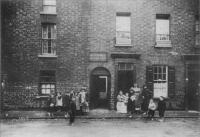
Plate 3. North Thomas Street National School, 1902. (HOGG COLLECTION, ULSTER MUSEUM)
Mirrors of real life?
A note of caution should, however, be sounded here. Whilst the intrinsic faithfulness of photography in reproducing a scene undiluted and undistorted by translation through a secondary medium underpins our instinctive acceptance of its veracity, our general reliance on, and ready belief in, printed visual information to make sense of the world around us has significant implications for its employment as historical evidence. Our unquestioning acceptance of the truthfulness of photographic images as mirrors of real life ensures that historic photographs are rarely assessed with the same kind of scepticism which would automatically be extended to other types of historical document. This confidence is often misplaced. Like any other body of source material, photography carries a subtext defined by the nature of the medium, the motives and personalities of the producers and collectors of the surviving material. It is easy to forget that every photograph is the result of more or less careful contrivance by the photographer. And whilst in mechanical terms the camera cannot lie (it cannot reproduce situations that did not exist) there is little doubt that it can and does dissemble. At times, images mislead simply because of the practical limitations of early photography. The static quality of many nineteenthcentury scenes results from the long exposure needed to confirm details on a negative of low light sensitivity, and the consequent need for the subjects to remain completely motionless while the picture was being taken. (If the required thirty seconds of stillness seems short, try it for yoursef!). Studio photographers often tried to ensure that their sitters kept perfectly still by confining their heads and torsos in metal braces which can sometimes be spotted in the subsequent photographs. Thus the upright rigidity which we associate with Victorian family life may owe as much to the unavoidable stiffness of posed family photographs as it does to written accounts of the formality of family relationships. The difficulty of capturing movement also underlines our impression of Victorian towns and cities as strangely devoid of life and action. Early photographers knew that topographical work would be ruined by the blur of a nodding horse, a running child or a casually-intruding passer-by, and consequently tried to keep such uncontrollable objects as far as possible out of frame. Because early photography required a great deal of light to carry an image through the aperture of the camera, bright sunny days provided the nearest to ideal conditions for field photography – a criterion which may partly account for our notion that the weather was better in the past. The impossibility of capturing an image in dim or dark surroundings also meant that interior shots could not be taken on location unless the space was exceptionally bright and airy. This has left us with the visual impression that Victorian working- class life took place almost entirely out of doors. Much work was done in fresh air and free sunlight. But as a general rule, women did not sew, spin, churn and milk in yards or fields – as they virtually always do in old photographs – but in the shelter of their homes or in specially appointed dairies. To some extent, therefore, both the style and the content of early photography was determined by technical factors.
Demands of the market
In assessing the validity of photographs as an historical source, one must recognise that photographers had their own agenda, and often directed their professional skills to meet specific market demands. Particular types of images, valued for aesthetic, commercial or political reasons, could be created by stage-setting or studio artifice. One of the earliest examples is a photograph of the Young Irelanders, William Smith O’Brien and Thomas Francis Meagher, taken with the gaoler in 1848 while they were under sentence of death for their part in that year’s abortive rising. The sentence was later commuted to transportation, and the rarity value of the image, which was in great demand, led to the production of faked copies in which actors took the place of the rebel leaders (plate 2). The photograph in plate 3 was one of a commissioned series taken in 1902 by A.R. Hogg to support the newspaper campaign of Dr McKeown, a Belfast social reformer, to expose the deplorable conditions endured by working-class children in the city’s national schools. Originally intended to attract sympathy and attention to the plight of these children, over the years this image – like many others of similar content and purpose – has gradually lost its ability to shock and move its audience. In this case the arrangement of scene and, in particular, of subject matter itself has prediSposed it to become imbued with a comfortable glow of nostalgia. Thus, what was once a provocative documentary image has been blunted by time into an icon for a mistaken idea of the past. The understandable desire of photographers to explore the artistic potential of their craft and to produce an image pleasing to the eye has placed a heavy burden on the functional value of visual material. Although we would hesitate before accepting any other work of art as objective description, we often allow ourselves to believe that even photographs which have clearly been arranged or amended in some way can act as honest witnesses. More seriously we often allow the aesthetic strength of photographs to distract us from their actual message. Take the example of the factory weaver in plate 4. Although taken by one of Ireland’s most talented journalistic photographers, its depiction of the cramped and dangerous conditions endured by workers in Belfast’s linen industry is almost completely subsumed by the beauty of its composition and lighting. In comparison, the anonymous photograph in plate 5, while much less artistically satisfying, is narratively much more successful in the picture it presents of the interiors of these vast mills with their armies of female employees.
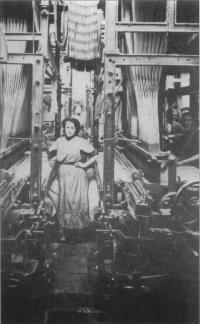
Plate 4. Jacquard Weaver, Belfast 1900. (HoGG COLLECTION, ULSTER MUSEUM)
Romantic idealisation
Our impression of the Victorian and Edwardian countryside has also been directly influenced by the romantic idealisation of rural life and labour which permeates the photographic record. By the turn of the nineteenth century, growing demand for picture postcards was exploited by professional photographers in the production of series upon series of images of idyllic scenes. In the case of Ireland, these were frequently focused on women, with comely Irish ‘colleens’, old women in shawls, women spinning and women with donkeys amongst this genre’s most favoured subjects. The proliferation of such images over the years has served to crystallise in the minds of advertisers and observers alike an immensely profitable but often wholly misleading concept of the Irish countryside and its female inhabitants. Another example of an image created specifically for popular consumption is the studio portrait of the nun in plate 6. This was copied from a commercially-produced carte-de-visite. The sitter is not one who has ‘taken the veil’ but a photographer’s model whose employment suggests that the humility and modesty of holy sisters would not in this instance be allowed to stand in the way of the commercial exploitation of a traditional image of Irish womanhood.
For posterity
Photographs were also frequently taken or commissioned for the express purpose of preserving an event for posterity. These are the most uncomplicated type of visual record. The need to document a precise and accurate image rendered the final result much less likely to have been distorted by deliberate artistry or intention. Thus, professional photographers have captured for us the excitement surrounding major political and social occasions, allowing modern audiences to savour the atmosphere that is so often missing from the documentary record. Often, their images contain surprisingly informative visual ‘asides’, such as the large heading ‘Erin Go Brach’ (‘Ireland Forever’) on the front wall of one of the temporary assembly halls built for the Ulster Unionist Convention in Belfast’s Botanic Gardens in 1892 (Plate 7). At local level, anonymous and amateur photographers provide critical back-up for compilers of local history, with street, canal and railway scenes, details of buildings now vanished, or characters whose names have come down through oral tradition, presented to us in such actuality of condition and aliveness. Even so, we must remember that the act of recording in itself generally indicates that the photographer’s subject matter was somehow ‘special’. This is particularly true of images of folk life and folk tradition, where the existence of documentary photography is almost invariably evidence of the growing rarity or marginalisation of the activities depicted.
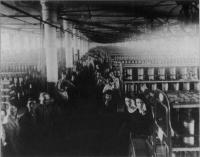
Plate 5. (Above) Blackstaff Mill, Belfast, c1918.
(ULSTER MUSEUM COlLECTION)
Unfillable gaps
In gathering material for our recent photographic survey of women in Ireland c.1880-1920, both the joys and the problems of working with photographic evidence were brought into sharp focus. Our delight in coming across unexpected images – such as those represented by Peter Walsh’s wonderfully atmospheric photographs of Dublin interiors – was almost equally matched by despondency over seemingly unfillable gaps. We realised at an early stage the difficulty of acquiring images of women engaged in everyday ‘housewifely’ tasks in the home – after all, few of us today would bother to take or keep a deliberate photographic record of family members vacuuming or washing dishes – but why were images of women doing anything at all in Limerick so thin on the ground? Was this a reflection of our own limitations, or was it instead a comment on the photographic history of this city? What did become increasingly clear to us was that certain omissions were of considerable historical significance. The fact that we found not one Irish first world war ‘homecoming’ photograph in any major or obviously relevant public collection – compared with the wealth of this genre in Britain – is evidence of crucial differences between the two countries in terms of popular reaction to the war. The apparent absence either of home-produced ‘naughty’ photographs or of examples of such material imported from British or continental sources, may be indicative of the existence in Ireland of a mentalite which discouraged proclivities eagerly pandered to in other parts of the contemporary western world.
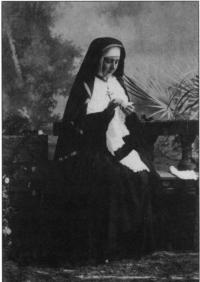
Plate 6. (Below) Carte-de-Visite of nun.
(ULSTER MUSEUM COlLECTION)
Images of Irish women
Locating and selecting images of women in the workplace also highlighted peculiar features. Old photographs of women in paid employment are not only much less common than those of male workers, but are also subtly different in their arrangement and interpretation. The widely-held opinion that work done by women was of lesser import and consequently of lesser worth is emphasised by the nature of the photographic record, where many images appear to show women at work not in the real world but in the country of the poor, the outmoded, the archaic and the inadequate. Thus, a survey of photographic sources confirmed in a very visual way the impression that in a patriarchal society women’s work was indeed regarded in a significantly dissimilar, ahnost always inferior, way to men’s work. On the other hand, many positive and often unexpected images came to light, showing women challenging the stereotype – and frequently displaying a remarkable degree of resourcefulness in so doing – whether in the interests of family survival, in the pursuit of personal fulfilment, or in the spirit of a wider altruism. The camera has graphically recorded the greatly underestimated role played by women not only in determining the direction of their own lives but also in influencing much wider social, economic, political and cultural developments, and in initiating key changes in many areas. It proves they were at the forefront of events – asworkers and consumers, teachers and doctors, reformers and campaigners, entertainers and creators – making crucial contributions to Irish society during a period of critical change. The immediacy and the often sublime quality of original black and white images helped bring to life our analysis of the victories and compromises experienced by women of all backgrounds, supplementing more traditional sources whose general preoccupation with matters of high politics often causes them to overlook developments of a more personal and social nature.
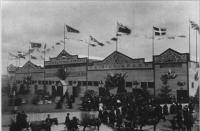
Plate 7. Ulster Unionist Convention,1892.
(WElCH C OLLECTION, ULSTER MUSEUM)
A democracy of understanding
The last point is important. Whilst they represent much more than merely pleasing illustrations, photographs, like any other document, are only valid when used in combination with other sources of information. Special care needs to be taken when employing visual material as evidence of the past precisely because photography is so exceptionally direct and compelling a means of communication. Its unique intelligibility creates a democracy of understanding unsurpassed by any other medium. By allowing the past to speak openly and with such easy familiarity, photography constitutes one of the most formidable and effective tools of history, if used with a careful appreciation of its limitations as well as its power.
Myrtle Hill lectures in history, women ‘s studies and local studies at the Institute of Continuing Education, Queen ‘s University, Belfast.
Vivienne Pollock is the curator of photographic collections in the local history department of the Ulster Museum, Belfast.
Further reading: W.A. Maguire, ‘Photographs and the local historian’, in Ulster Local Studies (Winter 1991). M. Hill and V. Pollock, Image and Experience: Photographs of Irishwomen c. 1880-1920 (Belfast 1993). B.F. Jones (ed.), The Encyclopedia of Early Photography (London 1981). O. Mathews, The Album of Carte-deVisite and Cabinet Portrait Photographs 1854-1914 (London 1974).























